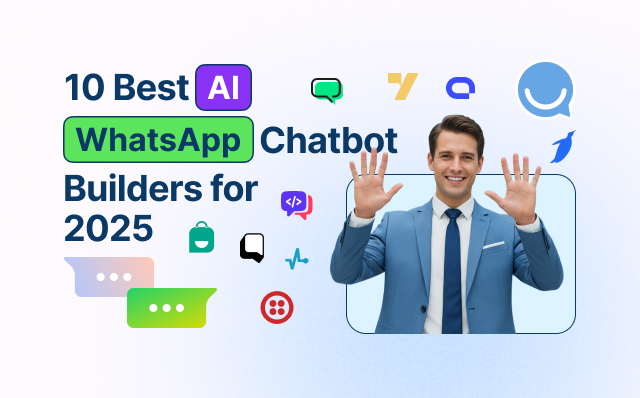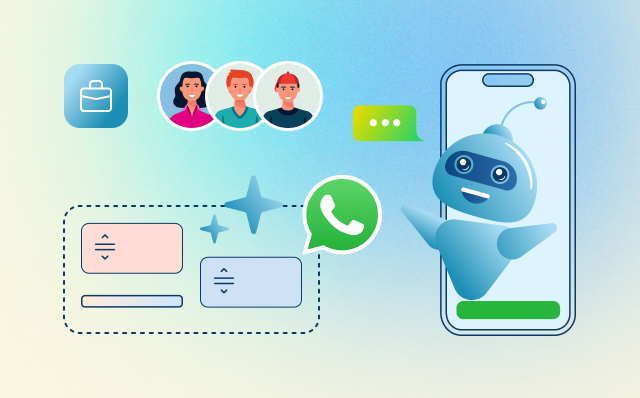Instant communication helps businesses effectively engage customers in today’s fast-paced digital world. WhatsApp’s massive global user base makes it popular. It has become a go-to platform for customer interaction. Businesses importantly improve customer engagement and save a large amount of time by using a really helpful WhatsApp chatbot that provides outstanding automation and personalization. The process of building a WhatsApp chatbot will be guided through in approximately five straightforward steps.
What is a WhatsApp Chatbot?
A WhatsApp chatbot is an automated messaging tool powered by artificial intelligence (AI) or predefined workflows. It communicates with users on WhatsApp, providing instant responses, handling inquiries, and even completing tasks like order confirmations or booking appointments. Businesses of all sizes use WhatsApp chatbots to streamline communication and deliver excellent customer experiences.
Why Use a WhatsApp Chatbot for Your Business?
1. 24/7 Availability
With a WhatsApp chatbot, you can ensure round-the-clock availability for your customers, making it easy to handle inquiries even outside business hours.
2. Cost-Effective Customer Support
Chatbots reduce the need for a large customer support team by automating repetitive tasks like FAQs, order tracking, or appointment scheduling.
3. Enhanced Customer Engagement
Chatbots offer personalized experiences by analyzing user preferences and delivering tailored responses, improving overall customer satisfaction.
4. Scalable Solution
Whether you’re handling hundreds or thousands of customers, a chatbot scales with your business needs.
The 5 Easy Steps to Build a WhatsApp Chatbot
Step 1: Get Access to the WhatsApp Business API
The WhatsApp Business API is essential for creating advanced chatbots. Unlike the standard WhatsApp Business app, the API enables automation and integration with third-party tools.
- Partner with an authorized WhatsApp Business Solution Provider, like Happilee, to access the API.
- Verify your business account on Meta’s platform and set up the API for your WhatsApp Business number.
Step 2: Define Your Chatbot’s Use Cases
Before designing your chatbot, identify the key functions it will serve.
Some common use cases include:
- Answering FAQs about products or services.
- Sending automated order confirmations and delivery updates.
- Handling appointment bookings.
- Offering customer support.
Make a list of specific scenarios to streamline your chatbot’s workflow.
Step 3: Design the Chatbot Flow
The chatbot flow determines how it interacts with users. Use a visual flow builder or scripting tool provided by platforms like Happilee to design a seamless conversation experience.
Key elements to include:
- Welcome message: Greet users and introduce your chatbot’s capabilities.
- Quick replies: Use buttons or predefined replies to make navigation easier for users.
- Error handling: Ensure the chatbot can redirect complex queries to a human agent when necessary.
Step 4: Train Your Chatbot
For AI-powered chatbots, training is crucial. Upload data sets of FAQs, customer interactions, and product details to help the chatbot learn and improve its responses over time.
Alternatively, use no-code chatbot tools that rely on pre-defined templates to avoid complex training requirements.
Step 5: Test and Deploy
Once your chatbot is built, test it extensively to identify any gaps or errors in its performance. Conduct trials with a small audience to gather feedback.
When you’re confident in its functionality, deploy the chatbot to your WhatsApp Business number. Promote it through website widgets, social media links, and QR codes to encourage customer interactions.
Key Features of a WhatsApp Chatbot
- Multilingual Support
Cater to diverse audiences by enabling your chatbot to communicate in multiple languages. - AI-Powered Insights
Leverage analytics to understand customer behavior and improve your chatbot’s performance. - Seamless Handoff
When a chatbot cannot resolve an issue, it should seamlessly transfer the conversation to a human agent without disrupting the customer experience. - Rich Media Messaging
WhatsApp chatbots can send images, videos, and documents, making communication more interactive.
Challenges in Building a WhatsApp Chatbot
Although WhatsApp chatbots are beneficial, they come with challenges, such as:
- Securing API access from an authorized BSP.
- Ensuring compliance with WhatsApp’s messaging guidelines.
- Balancing automation with the need for human interactions.
Working with experienced providers like Happilee simplifies these challenges by offering end-to-end support.
Why Choose Happilee for Your WhatsApp Chatbot?
Happilee specializes in creating robust WhatsApp CRM and chatbot solutions tailored to various industries. Here’s why businesses trust Happilee:
- User-Friendly Interface: Build and customize chatbots with no coding skills required.
- Comprehensive Features: Enjoy CRM integrations, automation, and advanced analytics.
- Dedicated Support: Get expert guidance to set up and optimize your chatbot for maximum impact.
Conclusion
Building a WhatsApp chatbot in 2025 is easier than ever with tools like the WhatsApp Business API and platforms like Happilee. By following these five steps, you can create a chatbot that enhances customer engagement, improves response times, and scales with your business. Don’t wait—start building your WhatsApp chatbot today and experience the future of customer communication.


